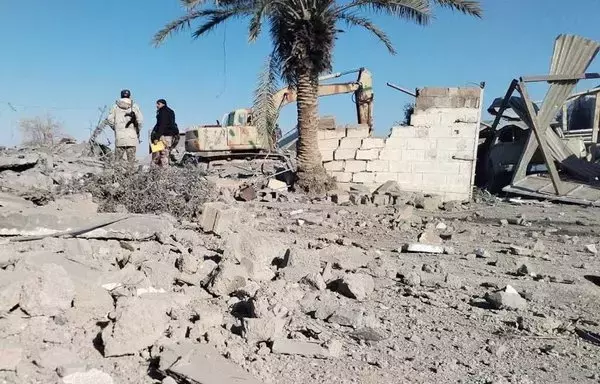Security
Iran's 'smokescreen' strategy continues with so-called Islamic Resistance in Iraq
Iran has a long history of using little-known 'smokescreen' militias to conceal its role in attacks, most recently with its proxy Kataib Hizbullah.

By Anas al-Bar |
Last month's deadly attack Iran-aligned militias launched on Tower 22, a US logistics outpost in Jordan, is characteristic of the way the Islamic Revolutionary Guard Corps (IRGC) operates in the region, remaining behind the scenes in order to evade direct responsibility.
The Iranian regime maintains it has no connection to the volley of attacks targeting US bases in Iraq and Syria and commercial shipping in the Red Sea, and that its regional proxies maintain "a sufficient degree of independence."
But there is mounting evidence that Iran is at the helm and plays a leading role in supplying allied militias with missiles and weapon technologies, as well as teaching them how to use it.
IRGC Quds Force directs proxies
"The proxies definitely do not operate on their own," political analyst Tariq al-Shammari told Al-Fassel. "At the end of the day, it is the IRGC's Quds Force that directs them and issues them orders, and they implement them."

These militias "are obedient," he added, noting that they take responsibility for their actions publicly and absolve their Iranian overlords of responsibility so they do not suffer the consequences.
"The Iranians do not risk asserting their absolute control over the militias in order to avoid paying the price for sponsoring them," al-Shammari said.
This deceptive policy will not prevent Tehran from being held accountable for the proxy wars it is igniting in the region, he said.
Kataib Hizbullah is one of Iran's most influential proxies in Iraq and Syria.
It has a long history of violence against Iraqis and international missions and interests in the Middle East, using the same ruse as the Iranians by carrying out attacks claimed by unknown "shadow groups" to escape accountability.
A new guise for Kataib Hizbullah
At the start of the Israel-Hamas war, Kataib Hizbullah emerged with a new guise -- the so-called "Islamic Resistance in Iraq" -- to claim responsibility for most of the attacks on US bases, including the Tower 22 attack.
Before the US response to that attack, Kataib Hizbullah announced that it had "suspended" its operations against US forces in a move that many regarded as an admission of responsibility for the attack.
According to observers, the announcement was an "Iranian maneuver" to limit US retaliation while leaving room for pressure through other proxies, such as Harakat al-Nujaba, which said it would not stop its attacks.
In the days preceding the US retaliatory strikes, which on February 2 hit dozens of targets belonging to Iranian proxies in the border areas between Iraq and Syria, there were reports that Iran was reducing its military presence in Syria.
Senior IRGC commanders and dozens of officers and advisors departed for Iran, media outlets reported, leaving their proxies with the task of maintaining Tehran's influence there.
Al-Shammari said the motive behind this tactic is twofold: not only does the Iranian regime fear that its leaders could be targeted, he said, but it also seeks to "conceal its constant involvement in supporting and assisting the militias."
He pointed to Iran's overarching strategic goals of "subjecting the countries of the region to its hegemony and monopolizing the resources of their people."
"This is what it is trying to do, by unleashing its proxies to create trouble and fuel conflicts," he said.
Escalation in Iraq, Syria
There are growing concerns that the situation is sliding towards the worst case scenario in light of the escalation in the Iraqi and Syrian arenas, said al-Mustansiriya University political scientist Issam al-Faily.
The United States laid down a counterattack plan with an "open timeframe" in response to the attack on Tower 22, he told Al-Fassel.
The attack and the subsequent retaliatory US strikes on the strongholds of Iran-aligned groups "raise fears of an expansion of the circle of war," he said.
He noted that for its part, the United States has said it does not seek a confrontation with Iran and a broader conflict in the region, and that it is acting within the framework of protecting its forces from any future attacks.
The United States seeks to contain the regional conflict and prevent its expansion, al-Faily said.
America needs to punish Iran on its home turf, not in Iraq and Syria.
Were it not for the Israeli occupation and the declared direct American support, there would be no justification for the existence of the militias, as you call them, who are the owners of the land and have the right to defend themselves and their homeland.
Finally, this double standards has been exposed to everyone.
Thank you, may God reward you.